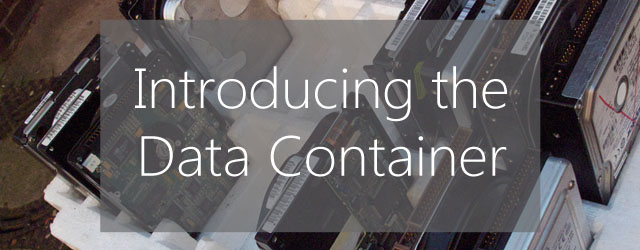It’s great having your System Protection backups on other media. If your server decides to stop working or a hard drive breaks, your data is safely stored on another device. Once your server is fixed, you can restore any of the image backups you made from whatever media they are on … in most cases. There are two situations where a Windows Server can be picky about what it does with a backup media.
When BackupAssist creates an image backup, it uses a Windows service to back up only the data that changed while still creating a full restore point for each backup. However, if the destination is an RDX drive or a Network destination (like a NAS) Windows cannot maintain historical information about the backups. This means full and not incremental image backups are made, and each backup will overwrite the previous one – leaving only a single restore point.
Another issue can arise when an image backup is moved to another media. When this happens, Windows is seldom happy. A Windows 2008R1 Server will look at it think, “who are you? You’re not the media my data was backed up to,” and ignore the media. On 2008R2, Windows is a little more forgiving. It will recognize the media, but the restore will only be from the last backup that was made.
System Protection backups are powerful and versatile but, as the scenarios show, they can be constrained by how Windows interacts with some types of media. BackupAssist overcomes these constraints with the introduction of the data container. A data container is a storage file that the backup job creates on the destination media, and puts the backup inside of. What makes this container so special is that it will be automatically mounted as a local disk for backups and restores. This means your Windows Server will not see a strange or unexpected media, but a media that it understands and can work with.
- If your image backup was moved to another media, BackupAssist can still restore any backup from it.
- When you create an image backup to a Network destination or RDX drive, incremental backups will take place and maintain multiple restore points, at a single destination.
Data containers add improved portability and flexibility to System Protection backups. In a world with so many types of storage media, these new containers make backups more versatile because they make Windows feel at home.

7 thoughts on “Introducing – the Data Container”
I’m excited about this news!
Would this concept also enable encrypted “incremental drive imaging” backups in the future (vss support)?
Hi Wilbert
Incremental drive imaging backups for these destinations are one of the main reasons we’re bringing this in! At the moment, encryption isn’t going to be available via BackupAssist but you could encrypt the data container itself.
Hi Michael,
Thanks for your answer. That is really helpful.
So how do we encrypt the data container itself? Do we have to put the data container inside a TrueCrypt container which can then automatically be unlocked and mounted by BackupAssist? Or do we have to use a script to do that?
What I would like to accomplish is to have the backup (media) encrypted (TrueCrypt, BitLocker or something else), unlocked without user intervention (like the TrueCrypt container in FileReplication jobs) and still have the benefits of the VSS incremental backups for VM’s VHDX files (as in DriveImaging jobs).
What would you suggest?
Hello Wilbert
Your question is well timed, as we have just published an article called Using the new Data container. This article has a link to the System Protection backup documentation, which now includes Data container information. The article also includes a link to the NEW Data container resource document, which provides a detailed overview of the technology and how it works. As noted in the earlier post, BackupAssist Data container’s do not support encryption, but you can apply your own encryption to the backup media.
If you would like assistance with your specific backup configuration, please don’t hesitate to contact your technical support, either through our BackupAssist Support Forum, or directly by Email or phone.
The Data container is a NEW feature in BackupAssist 7.1 which is now available from our downloads page.
I was very excited by this feature as it would solve a unique problem I have with a client that is running SBS 2008. That is until I saw:
“Note: For Windows Server 2008 R1, data containers are not currently supported”
When you say “not supported” I assume you mean “won’t work”? Do you plan support for the original Server 2008/SBS 2008 in the future?
Hi Alan
Unfortunately, at the moment the option to use VHDs isn’t available for Server 2008 R1 due to performance issues. It’s something we’re looking at implementing in the future. Sorry, we haven’t been able to meet your requirements in this case. Please let me know if there is anything else I can help with.
Hello Alan
To follow up on your question – I can confirm that Data container support for Windows Server 2008R1 will be available in a later release of BackupAssist.